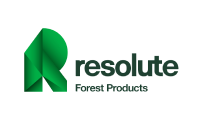Live Zoom Session
Corporate transparency is no longer optional. Investors, regulators, and consumers are demanding clarity on how businesses affect society and the environment—and how sustainability issues affect business performance. This is where double materiality comes in.
In August 2025, over 300 organizations called on EU policymakers to safeguard the double materiality foundation of the Corporate Sustainability Reporting Directive (CSRD). By mid-September, that number had risen to 477 signatories, showing strong support for preserving rules that drive both competitiveness and sustainability.
Benefits of Double Materiality in Reporting
Why is double materiality such a game changer? Here are the main benefits:
- Balanced perspective: Considers both impacts on society/environment and financial risks to companies.
- Better decision-making: Delivers high-quality data to investors, regulators, and stakeholders.
- Level playing field: Ensures companies across the EU follow consistent reporting rules.
- Future-proof strategies: Encourages businesses to adopt credible climate transition plans.
- Global alignment: Keeps EU standards interoperable with GRI and the ISSB, avoiding fragmented reporting.
Recommended Resource
Take your knowledge further with the Global GRI Standards Certified Training Course, delivered by the Center for Sustainability and Excellence (CSE). This official GRI-certified program helps you:
- Apply the GRI Standards in ESG and CSRD reporting.
- Translate double materiality insights into practice.
- Ensure alignment with global frameworks like ISSB.
Practical Steps to Safeguard Corporate Transparency
Preserving the integrity of the CSRD means focusing on smart simplification, not weakening substance. Policymakers are urged to:
- Maintain double materiality across all ESG topics.
- Keep the CSRD scope at 500+ employees, ensuring coverage of major companies.
- Enable flexible value chain data sharing without lowering standards to micro-SME levels.
- Require credible climate transition plans with measurable targets.
- Strengthen risk-based due diligence under the CSDDD.
Common Mistake: Oversimplification
Simplification is welcome, but oversimplifying can create loopholes. Narrowing reporting obligations would undermine competitiveness and leave stakeholders without the insights they need.
Real-World Applications of Double Materiality
Global momentum is building behind double materiality:
- At the UN’s International Conference on Financing for Development (FfD4), governments encouraged reporting that reflects impacts, risks, and opportunities.
- A 2024 study by the International Federation of Accountants revealed that 85% of companies already use double materiality in their sustainability reports.
- Companies like IKEA, H&M, Nestlé, and Nokia have signed onto public letters affirming its value.
As Carine de Boissezon, EDF Chief Impact Officer, put it:
“The EU, thanks to the Green Deal, is ten years ahead in the green industrial revolution. Where there is room for smart simplification, let’s tweak the regulation. But we need to stay the course and assert our leadership.”
FAQs on Corporate Transparency
What is double materiality?
Double materiality is a reporting principle where companies disclose both their impacts on people and the planet and the financial risks they face from sustainability issues.
Why is double materiality important for the EU?
It ensures transparency, keeps EU reporting aligned with international standards, and supports competitiveness in the global economy.
Which organizations support double materiality?
Hundreds of investors, businesses, and organizations—including Allianz, IKEA, Nestlé, and B Lab—have signed joint statements urging EU policymakers to preserve it.
Strengthen your expertise in sustainability reporting and double materiality
Corporate transparency is now central to business resilience and competitiveness. To strengthen your expertise in sustainability reporting and double materiality, consider enrolling in the Global GRI Standards Certified Training Course.
This program, delivered by the Center for Sustainability and Excellence (CSE), is officially certified by GRI and equips professionals to:
- Apply the GRI Standards effectively in ESG and CSRD reporting.
- Ensure interoperability with global frameworks such as ISSB.
- Translate double materiality insights into clear, decision-useful disclosures.
By completing this course, you’ll gain the skills to meet regulatory demands, boost stakeholder trust, and contribute to a more sustainable and competitive economy.
As a trusted Certified Training Partner (CTP) of the Global Reporting Initiative (GRI), CSE is proud to deliver the GRI Standards Certified Training Course, which is officially recognized by GRI, the world’s leading standard-setter for sustainability disclosures.







